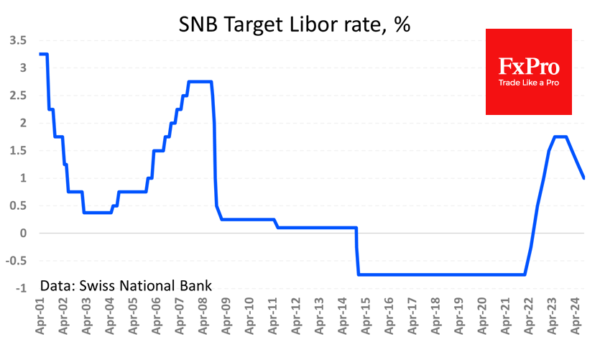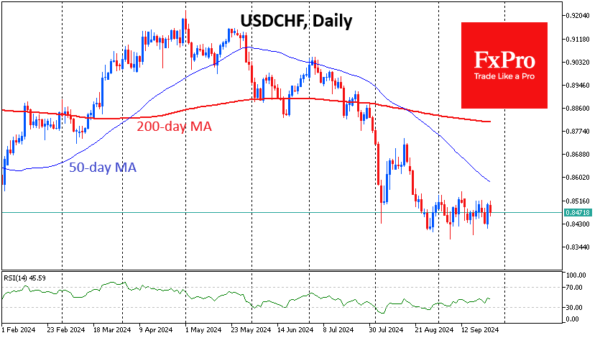The Swiss National Bank met expectations by cutting its key interest rate by 0.25 percentage points to 1.0%, slowing the pace of the move to normalisation after two cuts of 0.50 percentage points each in March and June. The central bank warned of further rate cuts in the coming quarters. In a commentary, the SNB noted a further marked slowdown in inflation and lowered its end-2024 forecast from 1.4% to 1.0%.
The bank cited the expensive franc as an important reason for the rate cut and inflation, which signals to FX market participants that the current situation is not comfortable. Previously, watchmakers had indicated that the strong franc was hurting sales. On Wednesday, the UBS economic expectations index fell to its lowest level since January at -8.8 from -3.4, against expectations for an increase to 2.7. The trade surplus has also been shrinking for two months. It remains high by historical standards but has been flat for more than a year and has failed to meet expectations against a multi-year rising trend.
It seems that some market participants were prepared for a sharper contraction, as the current decision caused the franc to strengthen by more than 0.6% across the market. The USDCHF pair has been trading in a range of less than 1.5% for the past month, following a 7% decline since the beginning of July. If this was an attempt by the SNB to reverse the trend and begin to weaken the franc, it was rather weak and unimpressive.
Although the Swiss central bank started before the Fed, its 25-point policy easing a week after the FOMC’s 50-point cut looks rather faded. This means that a period of currency market stabilisation could be followed by a new wave of Swiss franc appreciation if the SNB does not act as decisively as the Fed, or even more so.






![Week ahead – ECB set to cut, BoC might pause as Trump U-turns on tariffs [Video]](https://www.actionforex.com/wp-content/uploads/2018/04/f-ecb29-218x150.jpg)








